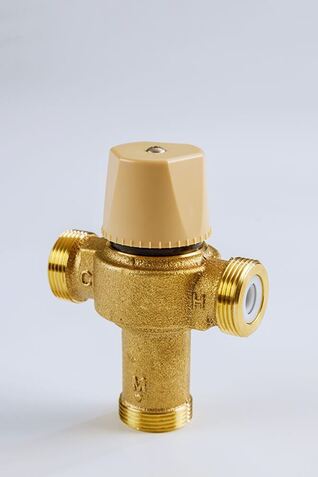
A thermostatic expansion valve is a device that controls the flow of refrigerant gas in refrigeration and air conditioning systems. It does this by regulating the pressure inside your system. This, in turn, regulates the temperature of your home or office building. The best thing about these valves is that they are designed to handle extreme weather conditions easily, whether it’s blistering hot or cold outside.
How Does a Thermostatic Expansion Valve Work?
The thermal bulb sensor on a thermostatic expansion valve is designed to sense the temperature of cooling water. As the incoming tap water starts to cool, it contacts the bulb sensor and begins transferring heat from its surroundings into itself until equilibrium has been reached between both systems.
When this happens, a wax pellet inside of the thermal bulb expands or contracts according to the amount of energy dissipated for equilibrium. This movement of internal components within an expansion device will cause needle valves within its structure to move accordingly, allowing more fluid through with the exact amount needed.
The thermal bulb releases less heat as more cold water flows through these internal structures. This allows pressure to build up behind them while also increasing flow rates restricted by various turns and twists present within the inner workings of a thermostatic expansion device.
Is a Thermostatic Expansion Valve Important?
The thermostatic expansion valve ensures that your home or office building is kept at the ideal temperature, whether it’s hot outside or cold. There are many different thermostatic expansion valves on the market. Still, not all of them work in extreme weather conditions. Some don’t have what it takes to handle drastic changes in indoor temperatures, which can be very frustrating for homeowners and business owners.
The best thing about these valves is that they are designed to handle extreme weather conditions easily. By utilizing a thermal bulb sensor, the device can sense how much heat needs to be dissipated for equilibrium between both systems.
How Do You Test a Thermostatic Expansion Valve?
The following are the steps an HVAC technician will follow when testing thermostatic expansion valves. First, they make sure that the refrigerant pressure on both sides of the capillary tube is equal. Then, they check for proper operation by attaching either the suction service valve or the liquid line service valve to the refrigerant side of the TXV.
Next, the technician connects a gauge manifold set with thermometers on both sides of each capillary tube to check for equal pressures and temperatures. After this is done, they wait two minutes before reading them to allow the measurements to stabilize. Finally, they compare the pressures and temperatures on one side of each capillary tube to ensure equality. If there is a complication, it will be indicated by a difference in temperature or pressure readings.
How Can You Tell If the Thermostatic Expansion Valve Is Faulty?
The main signs of a faulty thermostatic expansion valve are that the heating system will not turn off properly or it will run constantly. A faulty thermostatic expansion valve can also cause a high water pressure problem due to an over-pressurized system. This causes water leaks throughout your home and is dangerous for anyone using the plumbing fixtures in your house. In this case, you should look at the thermostatic expansion valve to see if it needs servicing or replacement.
What Causes a Thermostatic Expansion Valve to Fail?
Several factors play a role in the failure of a thermostatic expansion valve. First, the temperature at which it operates must be within its rated range. If it is not, then it may fail.
Secondly, the fluid temperature that enters the valve must be checked to see if it is within range. Suppose there is a massive difference between these two temperatures. In that case, the expansion process will not occur accurately, and this can lead to pressure losses because cold water or gas entering into a system could cause increased pressures in certain areas.
Thirdly, if the system that it is part of has extended operating hours and doesn’t have enough time for complete expansion to occur, this can lead to pressure differences in a closed-looped line and result in leaks or undetected water hammer problems. Finally, some valves may have been improperly adjusted by someone who did not know how to make the adjustment. This can lead to significant pressure losses and difficulties if the valve cannot effectively perform its job as it should.
If you are searching for reliable heating and cooling experts in San Antonio, then Rosenberg Plumbing & Air is your answer. With immense experience in the HVAC industry, we can install, repair, or maintain your system. In addition, we offer air quality services. Let our staff know what services you are looking to get, and we will provide the best solution. Contact Rosenberg Plumbing & Air today for more information.
Tags: Thermostatic Expansion Valve
